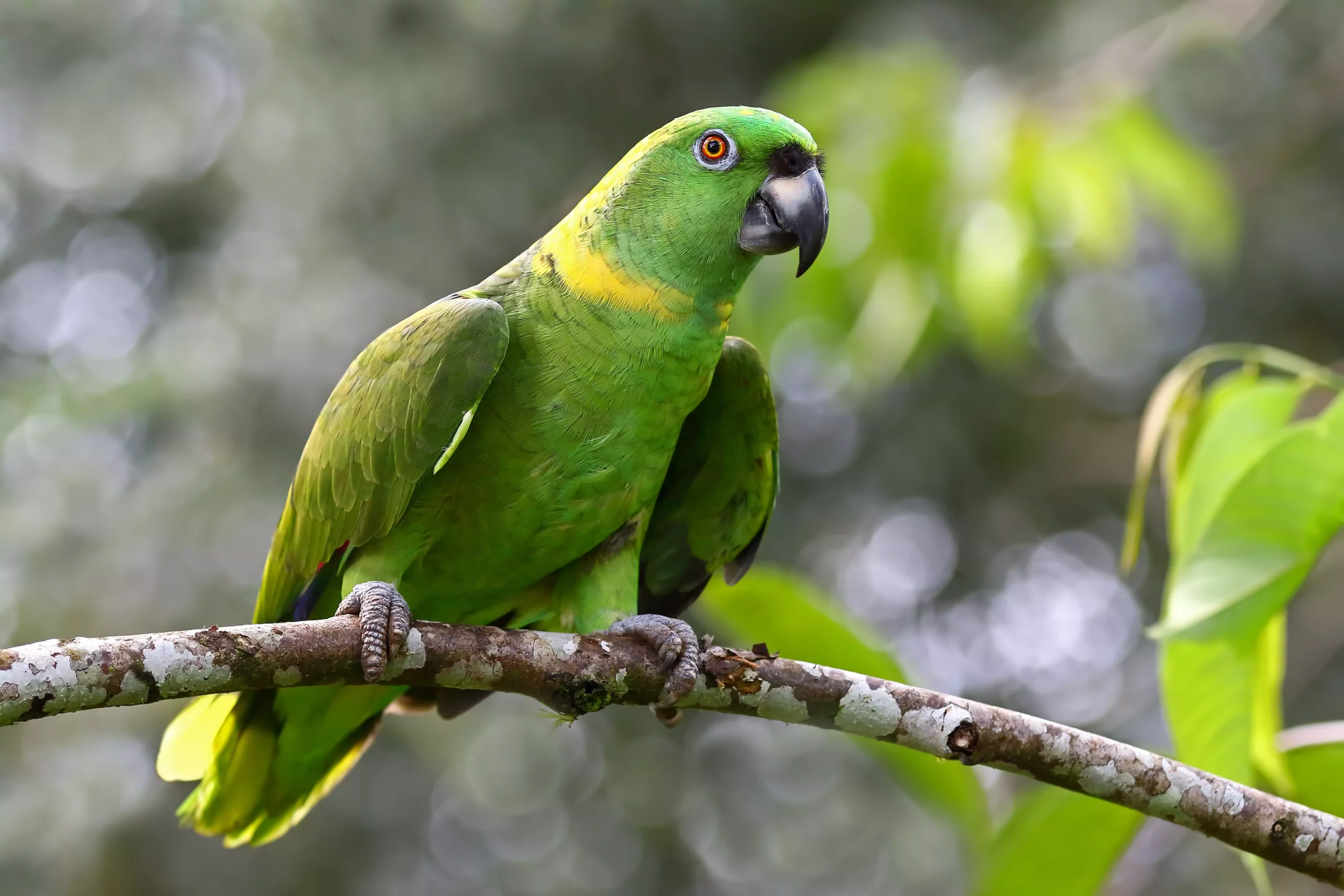The Yellow-naped Amazon parrot (Amazona ochrocephala auropalliata) stands out as not only an eye-catching avian species, but also as an immensely intelligent companion. Known for their vivid green plumage, adorned with striking yellow patches on the nape and head, these parrots are an appealing choice for many bird enthusiasts. However, ownership comes with significant responsibilities and challenges. Their extraordinary vocal abilities—the hallmark that sets them apart—make them a favorite among parrot lovers, while their need for social interaction and mental stimulation can be demanding.
Reaching sizes between 12 to 15 inches and weighing around a pound, Yellow-naped Amazons can live for an astonishing 50 to 60 years or longer with proper care. This long lifespan aligns them closer to a lifetime commitment than a mere pet purchase. Some individuals have been reported to reach ages of 70 or even 90, highlighting the importance of long-term planning for potential owners. As they mature, these birds can display unique personality traits, evolving from playful younglings to mature birds with distinct needs.
These parrots are native to Central America, predominantly found along the Pacific slithers of southern Mexico and parts of northwest Costa Rica. The biogeography of their habitat is critical; as their populations are dwindling due to habitat loss and illegal trapping, conservation efforts have become paramount. Two cited subspecies—the Honduras Yellow-naped Amazon and the Roatán Yellow-naped Amazon—showcase variations in range and delicacy, reiterating their endangered status in the wild.
Forming an emotional connection with a Yellow-naped Amazon can be a deeply rewarding experience. These parrots thrive on attention and interaction with their owners, often exhibiting behaviors that are affectionate and entertaining. Hand-fed individuals may display more devoted tendencies, establishing a nuanced bond that reflects companionship. However, prospective owners should be aware of the “hormonal bluffing” phase. This transitional period, typically occurring between 4 months to a year, is characterized by aggressive tendencies that may challenge the owner’s patience.
While it is not uncommon for adolescent Amazons to exhibit behavioral outbursts, the general temperament may be more tolerant in females. That said, families with young children might consider postponing the addition of a Yellow-naped Amazon, favoring species that are calmer and better suited for interactions with kids.
The ability of Yellow-naped Amazons to learn and mimic speech is one of their defining attributes. These birds can develop an impressive vocabulary, often using words and phrases with clarity that surprises many owners. However, it’s important to remember that they can also pick up on less-than-desirable phrases, making the environment in which they are raised vital to their development. Employing positive reinforcement techniques can enhance their learning experience, ensuring that the parrots not only expand their vocabulary but do so while engaging in healthy behaviors.
Maintaining the health of a Yellow-naped Amazon is interconnected with their diet. These birds require a balanced intake of high-quality pelleted foods complemented by fresh fruits and vegetables. Neglecting their dietary needs can lead to severe health issues, including obesity and related complications. It’s recommended that about one-third to one-half cup of pellet food and an equivalent serving of produce be given daily. Moreover, considering their penchant for foraging, hiding treats within their enclosure can stimulate their instinctual behaviors, providing both physical and mental benefits.
Creating an appropriate habitat for a Yellow-naped Amazon is essential for their well-being. Their cage should provide ample space for movement, measuring at least 3 square feet, equipped with climbing structures, toys, and perches that can stimulate both exercise and cognitive engagement. Remember, these parrots require at least three hours of out-of-cage time daily to meet their exercise needs.
Regular interaction and mental challenges—like puzzle toys or learning tricks—are crucial for keeping these intelligent creatures entertained and happy. Neglected or isolated birds may resort to destructive behaviors such as feather plucking, signaling a need for greater attention or care.
Owning a Yellow-naped Amazon parrot is not a casual decision. It’s a profound commitment to a creature that mirrors human emotional complexity. For those prepared to invest time, effort, and love into their care, a Yellow-naped Amazon can become a cherished companion for decades. As you consider your options, thorough research and consideration of this parrot’s needs are indispensable—as is the understanding of their glorious yet demanding nature.

